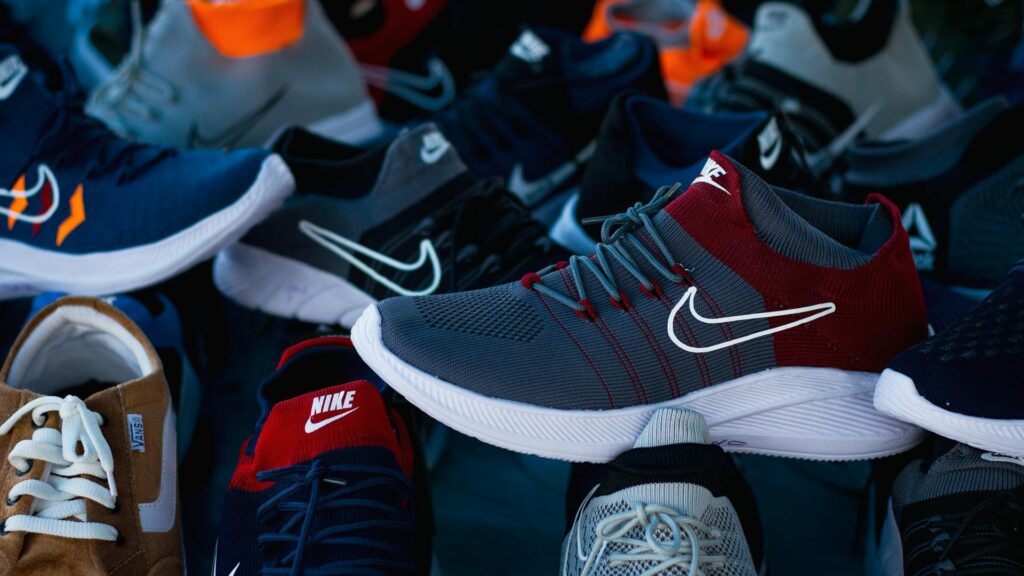
In the realm of cross – border trade, which is full of opportunities and challenges, “the risk of imitation brand goods transportation” has always been a crucial and complex issue that cannot be ignored. With the dynamic changes in the global consumer market, the transportation of imitation brand goods presents a unique demand situation. However, “the risk of imitation brand goods transportation” is like hidden reefs in the dark, potentially causing a huge impact on the operations of sea freight lines at any time.
Next, let’s deeply analyze various aspects related to “the risk of imitation brand goods transportation”, including the demand for imitation brand goods, the risks faced, the coping strategies of sea freight lines, and the methods of risk control.
I. The Demand for Imitation Brand Goods
In the broad framework of the global market, there is indeed a certain demand for imitation brand goods.
From the consumer’s perspective, in some less – developed economies, consumers are highly attracted to the quality and design of branded products. However, the high prices make these products unaffordable. Imitation brand goods, with their lower prices, offer a similar appearance and some functions of branded products, meeting the needs of these consumers who pursue quality but are restricted by their budgets.
For example, in some countries in Southeast Asia and Africa, consumers have a relatively high demand for imitations of international well – known brand clothing and electronic products, hoping to improve their quality of life by purchasing such imitation products. This forms one of the sources of “the risk of imitation brand goods transportation”, because satisfying this demand comes with the risk of infringement.
From a business perspective, some small – scale retailers and wholesalers, in order to obtain higher profits in the fierce market competition, choose to purchase imitation brand goods. In local markets, consumers have a high awareness of brands, but the procurement costs of genuine products are high. The price advantage of imitation brand goods enables these merchants to stock goods at a lower cost, attracting price – sensitive consumers and increasing sales. However, this business behavior also exacerbates “the risk of imitation brand goods transportation”, as the transportation of imitation brand goods fundamentally violates intellectual property protection laws and regulations.
It must be emphasized that in most countries and regions, the production and sale of imitation brand goods violate intellectual property protection laws and regulations. Although there is demand, this demand, which is based on infringement, inevitably leads to the existence of “the risk of imitation brand goods transportation”.
II. Analysis of Risks in Imitation Brand Goods Transportation
(I) Legal Risks: The Sword of Damocles
Among “the risks of imitation brand goods transportation”, legal risks are the most prominent. The transportation of imitation brand goods seriously infringes on the intellectual property rights of brand owners, including trademark rights, patent rights, and copyrights. Once detected by the customs, the goods will surely be seized and confiscated, and the transportation enterprise will face huge fines. Although the intellectual property protection laws of different countries and regions vary, they all severely crack down on imitation brand goods.
Take the European Union region as an example. Its intellectual property protection legal system is complete, and the customs conducts strict inspections of imitation brand goods. Once imitation brand goods are discovered, in addition to confiscating the goods, the transportation enterprise will be fined several times the value of the goods. In the United States, relevant laws not only target the goods themselves but may also hold the transportation enterprise jointly liable. In severe cases, the enterprise may face legal proceedings, and responsible persons may even face criminal charges. All these fully demonstrate the severity of “the legal risks in the transportation of imitation brand goods” at the legal level.
(II) Reputation Risks: The Invisible Killer of Corporate Image
If sea freight lines are frequently involved in the transportation of imitation brand goods and are exposed, “the risk of imitation brand goods transportation” will hit the enterprise in the form of a reputation crisis. In today’s business environment, which values commercial integrity and intellectual property protection, once partners and customers learn that a sea freight enterprise is involved in the transportation of imitation brand goods, they usually terminate the cooperation immediately.
Good business reputation is the cornerstone of the long – term development of sea freight enterprises. Losing reputation makes it difficult for the enterprise to expand new customers and causes the loss of existing customers, negatively affecting the overall operation and profitability of the enterprise. This further highlights the destructive power of reputation risks within “the risk of imitation brand goods transportation”.
(III) Transportation Risks: The Hidden Time – bomb on the Way
“The risk of imitation brand goods transportation” is also reflected in the transportation process. Due to the lack of strict quality control in the production of imitation brand goods, their quality is uneven, and there are many potential safety hazards. For example, some imitation brand electronic products use inferior components, which may self – ignite or explode during transportation, not only damaging other goods on the same ship but also endangering the safety of the ship and crew.
In addition, due to the illegal nature of imitation brand goods transportation, the consignor may conceal the true information of the goods, causing the sea freight line to transport dangerous items without knowledge, increasing the uncertainty and risks during the transportation process. This makes “the risk of imitation brand goods transportation” more complex and dangerous in the transportation link.
III. Coping Strategies of Sea Freight Lines
(I) Establish a Stringent Cargo Review System
Facing “the risk of imitation brand goods transportation”, the primary task of sea freight lines is to establish a strict and complete cargo review process. Before accepting the goods, the consignor is required to provide detailed and accurate cargo information, including the brand, model, manufacturer, etc. For suspected imitation brand goods, the consignor needs to provide relevant authorization documents such as brand authorization letters and patent certificates.
Verify the authenticity of the goods by comparing with the official brand database. At the same time, strengthen the inspection of the packaging and labels of the goods. Imitation brand goods usually have differences from genuine products in packaging details and label clarity. Professional reviewers can identify imitations through these details, thereby reducing “the risk of imitation brand goods transportation”.
(II) Conduct In – depth Staff Training to Improve Identification Ability
To effectively address “the risk of imitation brand goods transportation”, sea freight lines should regularly organize their employees to participate in intellectual property protection and legal regulations training, enhancing employees’ ability to identify imitation brand goods and their legal awareness. The training content covers the intellectual property characteristics of common brands, the intellectual property laws of different countries, and the serious consequences of transporting imitation brand goods.
Through case analysis, simulation inspections, and other methods, let employees deeply understand how to accurately identify imitation brand goods and the handling procedures when facing suspected imitation brand goods. For example, by showing the differences in trademark embroidery techniques, label materials, and printing quality between genuine and imitation brand clothing, help employees improve their discrimination ability, so as to better prevent and control “the risk of imitation brand goods transportation” in their actual work.
(III) Build a Multi – party Cooperation and Communication Bridge
Establishing a close cooperation and communication mechanism with relevant departments such as customs and intellectual property protection agencies is an important measure for sea freight lines to deal with “the risk of imitation brand goods transportation”. Keep abreast of the latest intellectual property protection policies, customs inspection focuses, and law – enforcement dynamics, actively cooperate with the work of relevant departments, and take the initiative to provide clues about imitation brand goods transportation.
Through cooperation with these departments, obtain professional guidance and support to enhance the prevention and control ability of imitation brand goods. For example, invite customs experts to conduct inspection skill training for enterprise employees, and learn advanced inspection equipment and methods to jointly resist “the risk of imitation brand goods transportation”.
(IV) Optimize Insurance Strategies to Enhance Risk Resistance
Considering the potential economic losses brought by “the risk of imitation brand goods transportation”, sea freight lines need to optimize their insurance strategies. Cooperate with insurance companies that have rich experience in intellectual property insurance, and purchase insurance products that cover risks such as legal litigation and fine compensation caused by the transportation of imitation brand goods.
When formulating insurance terms, clarify the rights and obligations of both parties to ensure effective economic compensation in the face of risks. Regularly evaluate the rationality of the insurance plan and adjust the insurance strategy according to business development and risk changes, enhancing the ability to cope with “the risk of imitation brand goods transportation”.
IV. Key Measures for Risk Control
(I) Strengthen Internal Management to Consolidate the Foundation of Risk Prevention and Control
Sea freight lines need to start from internal management, formulate strict prevention and control policies and procedures for the transportation of imitation brand goods, and ensure that all employees strictly implement them, so as to effectively control “the risk of imitation brand goods transportation”. Establish a liability – investigation system, and severely punish employees who violate regulations and transport imitation brand goods to form an internal deterrence.
Regularly conduct internal audits and evaluations of the cargo review process and employees’ implementation, and promptly identify and rectify management loopholes. For example, set up a special risk management department to conduct comprehensive reviews of the business regularly, ensuring the effective implementation of prevention and control policies and reducing “the risk of imitation brand goods transportation” from the aspect of internal management.
(II) Deepen Customer Education to Guide Compliance Transportation
To reduce “the risk of imitation brand goods transportation”, sea freight lines should actively publicize the risks and legal consequences of imitation brand goods transportation to customers, improving customers’ legal awareness and compliance awareness. Before signing a transportation contract, clearly inform customers of the responsibilities and risks of transporting imitation brand goods, and require customers to sign a compliance transportation commitment.
Through holding customer training seminars, distributing promotional materials, and other means, let customers understand the importance of intellectual property protection and guide them to choose legal and compliant products for transportation. For example, regularly organize online or offline customer symposiums, share intellectual property protection cases and industry trends, and strengthen communication and interaction with customers to reduce “the risk of imitation brand goods transportation” at the source.
(III) Leverage Technological Innovation to Improve Risk Prevention and Control Efficiency
Leveraging advanced technological means is an effective way for sea freight lines to deal with “the risk of imitation brand goods transportation”. Use big – data analysis technology to analyze past transportation cargo data, establish a risk model for imitation brand goods, and mine potential risk points of imitation brand goods transportation.
Introduce artificial intelligence image recognition technology to quickly and accurately identify and compare the packaging and labels of goods, improving the efficiency and accuracy of reviews. For example, develop an AI – based cargo review APP, through which employees can quickly obtain a judgment on whether the goods are imitation brand by taking pictures of the goods with their mobile phones, using technological innovation to enhance the ability to prevent and control “the risk of imitation brand goods transportation”.
In cross – border trade, “the risk of imitation brand goods transportation” always exists. However, by adopting the above – mentioned effective coping strategies and risk – control methods, sea freight lines can minimize risks, ensure legal and compliant business operations, and develop steadily. Only by respecting intellectual property rights and abiding by laws and regulations can sea freight lines avoid the impact of “the risk of imitation brand goods transportation” in the fierce market competition and win long – term development opportunities.





